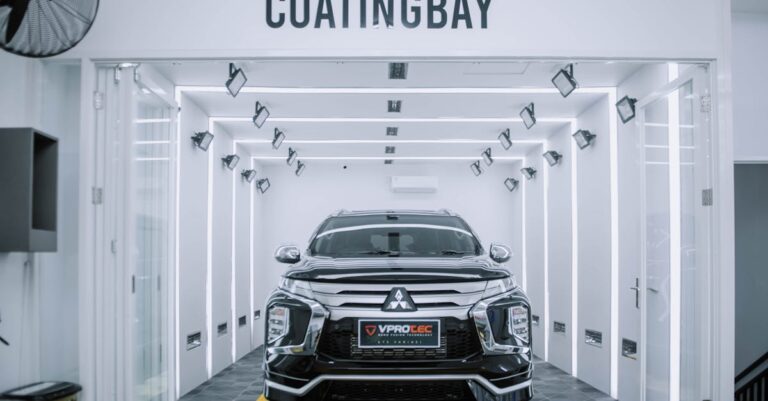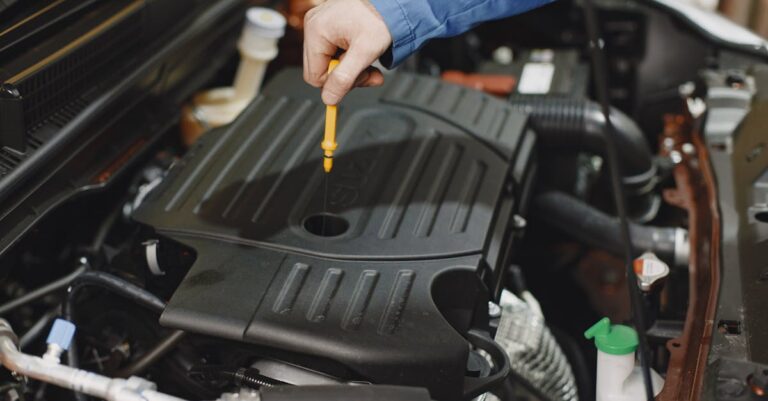Table of Contents
- Fixing Minor Car Dents Yourself: A DIY Guide
- That Annoying Ding: Can You Really Fix It Yourself?
- What Exactly Counts as a “Minor” Dent?
- More Than Just Looks: Why Bother Fixing Small Dents?
- Hold On! Safety First Before You Start
- Playing Detective: How to Assess the Dent Damage
- Your DIY Toolkit: Popular Dent Repair Methods Explored
- DIY Don’ts: Common Mistakes and Myths to Avoid
- Know When to Fold ‘Em: When DIY Isn’t the Answer
- Finishing Touches: Post-Repair Care
- Conclusion: The Satisfaction of a DIY Dent Fix
- Frequently Asked Questions (FAQs)
Fixing Minor Car Dents Yourself: A DIY Guide
Okay, let’s talk about that sinking feeling. You walk out to your car, maybe after a trip to the grocery store or just parked on the street, and there it is. A dent. Not a huge, car-totaling crater, but a noticeable, annoying little ding that wasn’t there before. It stares back at you, mocking your car’s otherwise smooth finish. Your first thought might be the hassle and cost of a body shop. But what if I told you that for many *minor* dents, you might just have the power to fix it yourself? Stick around, because we’re diving deep into the world of DIY car dent repair.
That Annoying Ding: Can You Really Fix It Yourself?
It sounds almost too good to be true, doesn’t it? Fixing a car dent without spending a fortune or losing your car for days? Well, for certain types of dents, it’s absolutely possible. Modern car bodies, especially the metal panels, have a surprising amount of memory. Sometimes, all they need is a little persuasion to pop back into their original shape. DIY methods harness basic principles like suction, temperature changes, or specialized pulling tools to gently coax the metal back. It’s not magic, but it does require patience, the right technique, and understanding which dents are fair game for a home repair.
What Exactly Counts as a “Minor” Dent?
This is crucial. Trying to DIY a major dent can often make things worse. So, what are we talking about when we say “minor”? Generally, we mean shallow dents, usually roundish, maybe up to a few inches in diameter, where the paint hasn’t been cracked or broken. Think door dings from careless neighbors in parking lots, dents from hail (sometimes), or maybe a stray shopping cart tap. The metal shouldn’t be sharply creased or stretched too much.
Dings vs. Creases: Knowing the Difference
Imagine pushing your thumb gently into a piece of clay – that shallow depression is like a ding. It’s usually smooth and relatively easy to access. Now, imagine folding that clay sharply – that sharp line is like a crease. Creases involve stretched metal along a line and are much, much harder to fix without professional tools and expertise. Most successful DIY repairs tackle dings, not sharp creases.
More Than Just Looks: Why Bother Fixing Small Dents?
Sure, vanity plays a part. We like our cars looking good! But fixing even minor dents goes beyond aesthetics. Firstly, an unrepaired dent, especially if the paint is stressed (even if not visibly cracked yet), can become a starting point for rust. Moisture gets in, and before you know it, that small ding is a bubbling rust spot – a much bigger problem. Secondly, dents hurt your car’s resale value. When it comes time to sell or trade in, a dent-free car commands a better price. Fixing it yourself saves the cost of professional repair, maximizing your return.
Hold On! Safety First Before You Start
Before you grab a plunger or a heat gun, let’s talk safety. It might seem like a simple task, but you’re still working on your vehicle, potentially using tools or methods involving heat or force. Don’t skip this!
Gear Up: Essential Safety Protection
Always, always wear safety glasses. You might be pulling, pushing, or using tools, and debris or parts could fly off unexpectedly. Protect those peepers! Gloves are also a good idea, especially if you’re using heat methods (like boiling water or a hairdryer) or handling potentially sharp edges if the dent is near a panel seam. You don’t want burns or cuts.
Setting the Stage: Your Work Environment
Make sure you have enough light to actually see what you’re doing. A well-lit garage or a shady spot outside on a clear day is ideal. Good visibility helps you assess the dent properly and apply the repair method accurately. If you’re using methods involving compressed air or potentially glue fumes (depending on the kit), ensure good ventilation. Open the garage door or work outdoors.
Playing Detective: How to Assess the Dent Damage
Not all minor dents are created equal. Before choosing your weapon (I mean, repair method), you need to properly assess the situation. Look closely, feel the dent, and consider these factors:
Location, Location, Location: Where is the Dent?
Is the dent on a flat, open panel like the middle of a door or hood? These are generally the easiest candidates for DIY repair. Is it near an edge, on a curved body line, or close to a seam? These areas are structurally stiffer, making the dent harder to pop out. Dents on complex curves or sharp body lines often require professional paintless dent repair (PDR) technicians.
Checking the Canvas: Is the Paint Intact?
This is a big one. Run your fingers gently over the dent. Do you feel any cracks, chips, or breaks in the paint? Look very closely under good light, maybe even with a magnifying glass if needed. If the paint is compromised, most simple DIY methods won’t work well, and trying them might even make the paint damage worse. Cracked paint means moisture can get underneath, leading to rust. Dents with broken paint usually require professional repair that includes repainting the area.
Your DIY Toolkit: Popular Dent Repair Methods Explored
Alright, assessment done, safety gear on – let’s look at some common DIY approaches. Remember, success isn’t guaranteed, and what works for one dent might not work for another.
The Humble Plunger: Suction Power to the Rescue?
Yes, the bathroom or sink plunger! It sounds silly, but the basic principle is sound: create suction to pull the dent out. You’ll want a cup-style plunger (like for a sink), not the flange type used for toilets. The dent needs to be larger than the plunger cup and ideally on a relatively flat surface.
When Does the Plunger Trick Shine?
This method works best on larger, shallow, soft dents on flat panels like doors or quarter panels. Think beach ball impact rather than a sharp pebble ding. The metal needs to be flexible enough for simple suction to work.
Plunger Power: Step-by-Step
First, clean the area around the dent thoroughly. Any dirt will prevent a good seal. Slightly moisten the rim of the plunger cup with water or petroleum jelly for better suction. Place the plunger squarely over the dent, ensuring the entire rim makes contact with the car body. Push down gently to create a seal, then pull back firmly and evenly. You might need several attempts. Don’t yank too hard, or you could damage the paint or the plunger. If it doesn’t pop after a few tries, this method likely won’t work for your specific dent.
Hot & Cold Therapy: Hair Dryer and Compressed Air
This method uses rapid temperature changes to make the metal contract and expand, hopefully popping the dent out. You’ll need a standard hairdryer and a can of compressed air (the kind for cleaning electronics, held upside down to spray the freezing propellant).
The Magic Trick Explained: Thermal Shock
The idea is to heat the dented area gently with the hairdryer for a minute or two. This makes the metal expand slightly. Then, immediately spraying the area with the freezing cold propellant from the inverted compressed air can causes rapid contraction. This sudden thermal shock can sometimes be enough to force the shallow dent back into place.
Executing the Hot/Cold Method Safely
Keep the hairdryer moving constantly over the dented area – don’t hold it in one spot, as you could overheat and damage the paint. Heat it for about 60-90 seconds until it’s warm to the touch (not scorching hot!). Immediately after removing the heat, hold the compressed air can *upside down* about 6-8 inches away and spray the dent for 10-15 seconds. The area will frost over. Be careful – the propellant is extremely cold and can cause frostbite; wear gloves! Listen for a potential ‘pop’. This may need repeating, but don’t overdo it, as extreme temperature cycles can potentially harm the paint’s clear coat over time. Use caution!
Just Add Water: The Boiling Water Technique (for Plastic!)
This is specifically for dents in flexible *plastic* bumpers, not metal panels. Many modern car bumpers have a lot of plastic components that can deform upon impact.
Perfect for Plastic: When to Use Boiling Water
If you have a dent in a plastic bumper cover, this method can be surprisingly effective. The heat makes the plastic pliable and allows it to return to its molded shape. It won’t work on metal body panels.
Careful Does It: Applying Hot Water
Carefully boil some water and pour it directly onto the dented area of the plastic bumper. Be very careful not to splash yourself! The heat will soften the plastic. Often, you’ll need to reach behind the bumper (if accessible) and push the dent out from the inside while the plastic is hot and pliable. Wear thick gloves for this! Sometimes, pouring cold water on it immediately after pushing can help it set back in place. Repeat carefully if needed.
Stepping Up: Using Suction Cup Dent Pullers
These are tools specifically designed for dent removal, operating on the same principle as the plunger but often with more pulling power and different cup sizes. You can buy kits online or at auto parts stores.
Choosing Your Weapon: Types of Suction Pullers
There are basic suction cups with handles you pull manually. Others use a lever mechanism for more controlled force. Some kits feature slide hammers attached to a suction cup – you use the hammer’s impact to pop the dent. Choose based on the dent size and your budget. Lever types often offer more control than basic pull handles.
Getting a Grip: Effective Suction Cup Use
Clean the dent area meticulously. Apply the cup firmly over the dent. Engage the suction mechanism (usually by flipping levers or pressing down). Pull steadily and controlled. For slide hammer types, use short, sharp taps rather than massive swings. You might need to try different positions or cup sizes. As with the plunger, success depends on the dent’s nature and the panel’s flatness.
Getting Serious: Glue Pull Repair (GPR) Kits
This is a more advanced DIY technique, closer to what professional PDR technicians sometimes use (though their tools and skills are far more sophisticated). It involves gluing plastic tabs to the dent and using a pulling tool.
Unboxing the Kit: What’s Inside?
GPR kits typically include a specialized hot glue gun, specific PDR glue sticks (different from craft glue!), various sizes and shapes of plastic pulling tabs, a pulling tool (often a mini-lifter or slide hammer), and a release agent (usually isopropyl alcohol) to remove the glue afterward.
The Glue Pull Process: Patience is Key
Clean the dent area *perfectly*. Select a tab slightly smaller than the dent. Apply hot PDR glue to the tab face. Quickly press the tab onto the center of the dent and hold it for a minute or so until the glue sets (follow kit instructions). Attach the pulling tool to the tab. Gently apply pulling pressure (squeeze the mini-lifter handles or use the slide hammer cautiously). The goal is to pull the dent out without pulling the tab off too soon. Listen for the metal moving. Once pulled, spray the release agent around the base of the tab to dissolve the glue and gently remove the tab. This method requires finesse and patience. You might need multiple pulls with different tabs, starting from the center and working outwards on larger dents. It often leaves the area slightly high, requiring tapping down, which is a skill in itself.
DIY Don’ts: Common Mistakes and Myths to Avoid
While the internet is full of ‘amazing’ dent repair hacks, some are ineffective or risky. The ‘dry ice’ method is often touted, but it’s rarely effective on car dents (the temperature change usually isn’t drastic or focused enough) and handling dry ice carries significant risk of severe cold burns. Avoid banging on the dent from the back with a regular hammer unless you *really* know what you’re doing (and likely have specialized bodywork tools) – you’ll probably just create more high spots and make it look worse. Also, don’t expect miracles from any single method on every dent.
Know When to Fold ‘Em: When DIY Isn’t the Answer
DIY is great, but sometimes you need to call in the pros. Knowing your limits saves you time, frustration, and potentially making the damage worse (and more expensive to fix).
Sharp Creases and Deep Gouges
As mentioned, sharp creases involve stretched metal that DIY methods typically can’t handle. Deep gouges also often stretch the metal too much and may have accompanying paint damage.
If the Paint is Cracked or Missing
If the paint barrier is broken, the dent needs more than just pulling. It requires proper sanding, filling (if necessary), priming, and painting to prevent rust and blend the repair. This is typically professional work.
Big Problems: Large or Complex Dents
Very large dents (spanning a significant portion of a panel) or dents in complex body lines or near panel edges are usually beyond the scope of basic DIY tools and techniques. They require the skill and specialized tools of PDR techs or conventional body shop repair.
The Aluminum Challenge
More and more cars use aluminum panels (especially hoods and fenders) to save weight. Aluminum behaves differently from steel – it doesn’t have the same ‘memory’, is harder to reshape, and is prone to cracking if worked improperly. Repairing aluminum dents almost always requires specialized professional techniques.
Finishing Touches: Post-Repair Care
So, you managed to pop that dent out – awesome! What now? Clean the area thoroughly to remove any residue (like plunger moisture, glue release agent, etc.). Inspect the paint closely one more time. If the area looks good, you might want to give it a light polish or wax to blend it in perfectly with the surrounding paintwork and add a layer of protection.
Conclusion: The Satisfaction of a DIY Dent Fix
Fixing a minor car dent yourself can be incredibly satisfying. It saves you money, avoids the hassle of a body shop visit, and gives you a sense of accomplishment. While not every dent is a candidate for a home repair, methods using suction, temperature changes, or specialized DIY kits can often work wonders on shallow dings with intact paint. Remember to assess the damage carefully, prioritize safety, choose the right method for the job, and know when it’s time to call a professional. That little imperfection might just be something you can tackle yourself, restoring your car’s smooth lines and your peace of mind!
Frequently Asked Questions (FAQs)
1. Will these DIY methods damage my car’s paint?
If done carefully and on dents where the paint is already intact, most of these methods carry a low risk of paint damage. However, excessive force (like yanking too hard on a plunger or suction cup), overheating with a hairdryer, or improper use of glue pull kits *can* potentially damage the paint or clear coat. Always proceed cautiously and stop if you suspect damage is occurring.
2. How do I know if my car panel is steel or aluminum?
The easiest way is to use a simple magnet. A standard refrigerator magnet will stick firmly to steel panels but won’t stick (or will only stick very weakly) to aluminum panels. Check various spots like the hood, fenders, doors, and roof.
3. Can I use regular craft hot glue for a Glue Pull Repair (GPR) kit?
It’s strongly discouraged. PDR glue sticks are specifically formulated for the task – they provide strong adhesion but are also designed to release relatively cleanly with a release agent without damaging automotive paint. Craft glue might not hold strong enough or could be much harder to remove, potentially pulling paint off with it. Always use the glue recommended for your specific GPR kit.
4. The dent popped out, but now the area seems slightly raised. What can I do?
This is common, especially with glue pulling methods. It’s called a ‘high spot’. Professionals use specialized tap-down tools (knockdowns) made of nylon or plastic and a small hammer to gently tap the high spot back down flush with the panel surface. This requires skill and practice to avoid making more small dents. Some advanced DIY kits might include a basic tap-down tool, but using it effectively takes practice.
5. Are professional Paintless Dent Repair (PDR) services expensive?
PDR is typically significantly less expensive than traditional body shop repairs that involve sanding, filling, and painting. While more costly than DIY, PDR offers a highly effective repair for many dents (even some that DIY can’t handle) while preserving the original factory paint. Prices vary based on dent size, location, and complexity, but it’s often worth getting a quote if DIY methods fail or aren’t suitable.









